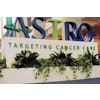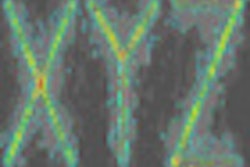A radiation boost scheduled midway through whole-breast radiation therapy (WBRT) for breast cancer patients significantly reduced the occurrence of grade III dermatitis, according to a study published in the August 1 issue of the International Journal of Radiation Oncology, Biology, Physics.
Patients who received this treatment, compared with those who had a radiation boost after WBRT, were also significantly less likely to have their treatment interrupted, according to radiation oncologists from Allegheny General Hospital in Pittsburgh.
Fewer than 1% of patients who received the boost midway through treatment experienced grade III dermatitis, compared with 8.9% of patients who received the boost at the end of their WBRT treatment. The midtreatment boost group also had a much lower incidence of grade II dermatitis, at 13.9%, compared with 31.4% for the end-of-treatment boost group.
Treatment interruption incidence was directly affected, with 98% of the midtreatment group completing treatment without interruption, compared with 86% of the other group, according to the study (Int J Radiat Oncol Biol Phys, August 1, 2010, Vol. 77:5, pp. 1303-1308).
The research team was led by Mark Trombetta, MD, program leader of breast and surgical brachytherapy at Allegheny General Hospital. The group reviewed the medical records of 327 patients with T1/T2 tumors treated with external-beam radiation therapy following a lumpectomy at Allegheny General Hospital between September 2000 and February 2008.
A total of 169 patients received a median whole-breast radiation dose of 5,032 cGy (range, 4,500-5,400), followed by a sequential mean tumor bed boost of 1,079 cGy (range, 360-1,620). Another 158 patients received a midtreatment tumor bed boost of 1,247 cGy (range, 1,000-1,440) after delivery of at least a 3,600-cGy whole-breast radiation dose. After completion of the midtreatment boost, treatment was resumed to a total median whole-breast dose of 5,040 cGy.
Significantly fewer women (5.7%) in the midtreatment boost group required an unplanned boost secondary to grade III acute desquamation, compared with those in the end-of-treatment boost group (18.9%). After a mean follow-up of 32 months in the midtreatment group, two women developed local failure; eight women had local failure after a mean follow-up of 27 months in the other group.
"Although advanced-grade acute toxicities are not always life-altering events, the reduction of acute grade III toxicity is significant," the authors wrote. "Our [midtreatment boost] technique reduces the morbidity associated with WBRT without compromising risks of recurrence by temporarily halting treatment to the low-risk breast volume, thereby continuing to irradiate the tumor bed."
Radiation-associated burns and blistering are a frequent topic posted by breast cancer patients on the message boards of the Susan G. Komen for the Cure foundation's website. If these posts are representative of the patient population at large, toxicities to the skin cause distress, anguish, and fear of radiation therapy treatments and potential disfiguration beyond a lumpectomy scar.
In a telephone interview with AuntMinnie.com, Trombetta said that all of his patients who have whole-breast radiation therapy utilize the midtreatment boost protocol, unless there is a specific clinical reason making it inappropriate.
"What we formally analyzed in our study is obvious in the toxicity outcomes of our patients," he said. "The risk of skin dermatitis is less, and it is much less severe with the women who do develop it. Our treatment interruption rate also remains very low."
By Cynthia E. Keen
AuntMinnie.com staff writer
September 9, 2010
Related Reading
ASTRO: Thermal tomo may predict skin response, November 5, 2009
Red wine reduces radiotherapy skin toxicity, August 14, 2009
IMRT reduces skin toxicity symptoms for breast cancer patients, July 20, 2009
Breast intensity-modulated radiotherapy curbs acute skin reactions, May 27, 2008
Accelerated breast radiotherapy leads to less toxicity, radiation exposure, September 10, 2007
Copyright © 2010 AuntMinnie.com







_p888_f1_thumb.png?auto=format%2Ccompress&fit=crop&h=167&q=70&w=250)











